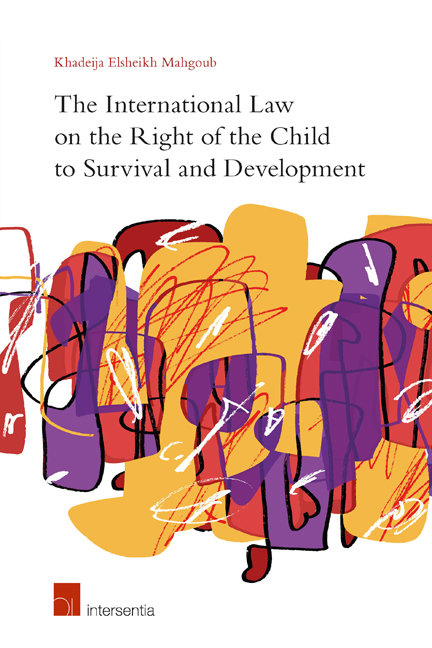Book contents
- Frontmatter
- Acknowledgements
- Contents
- Introduction
- Chapter 1 Historical Background
- Chapter 2 Current and Possible Interpretations of Article 6(2). Analytical Perspectives to the Work of the Committee on the Rights of the Child
- Chapter 3 The Nature of Article 6(2) on the Survival and Development of the Child
- Chapter 4 The Survival and Development of the Child and the Child's Human Dignity
- Chapter 5 Who is Responsible? The Obligation of the State Party to Create Measures and Conditions Necessary for the Survival and Development of the Child
- Chapter 6 Case Studies on Article 6(2)
- Conclusion
- Bibliography
- Official Documents
Chapter 3 - The Nature of Article 6(2) on the Survival and Development of the Child
Published online by Cambridge University Press: 28 November 2017
- Frontmatter
- Acknowledgements
- Contents
- Introduction
- Chapter 1 Historical Background
- Chapter 2 Current and Possible Interpretations of Article 6(2). Analytical Perspectives to the Work of the Committee on the Rights of the Child
- Chapter 3 The Nature of Article 6(2) on the Survival and Development of the Child
- Chapter 4 The Survival and Development of the Child and the Child's Human Dignity
- Chapter 5 Who is Responsible? The Obligation of the State Party to Create Measures and Conditions Necessary for the Survival and Development of the Child
- Chapter 6 Case Studies on Article 6(2)
- Conclusion
- Bibliography
- Official Documents
Summary
INTRODUCTION
This chapter attempts to discuss the nature of article 6(2) on the survival and development of the child. Article 6(2) has been identified by many as a general principle of the Convention on the Rights of the Child (CRC). Other authors disagree and instead classify article 6(2) as an aim of the entire substantive article of the CRC. The main argument in this chapter is that the article is very complex and has multiple identities. Basically, article 6(2) is a right in itself, an aim of the Convention, a general principle and a quality-control factor.
In this regard, it is probably worth mentioning that having more than one categorisation of an article of the Convention is not new to the Convention on the Rights of the Child. For example, article 12 of the Convention includes the following on the participation of children:
States Parties shall assure to the child who is capable of forming his or her own views the right to express those views freely in all matters affecting the child, the views of the child being given due weight in accordance with the age and maturity of the child.
For this purpose, the child shall in particular be provided the opportunity to be heard in any judicial and administrative proceedings affecting the child, either directly, or through a representative or an appropriate body, in a manner consistent with the procedural rules of national law.
The Committee on the Rights of the Child has stated that this article is not only a general principle, but also a means for States to use: ‘Listening to children should not be seen as an end in itself, but rather as a means by which States make their interactions with children and their actions on behalf of children ever more sensitive to the implementation of children's rights.’
ARTICLE 6(2) AS A GENERAL PRINCIPLE: A DISPUTED IDENTITY
This identity of article 6(2) appeared very early on the children's rights literature that followed the adoption of the Convention on the Rights of the Child. Nevertheless this identity of article 6(2) has been disputed by many authors over the years.
- Type
- Chapter
- Information
- Publisher: IntersentiaPrint publication year: 2015



